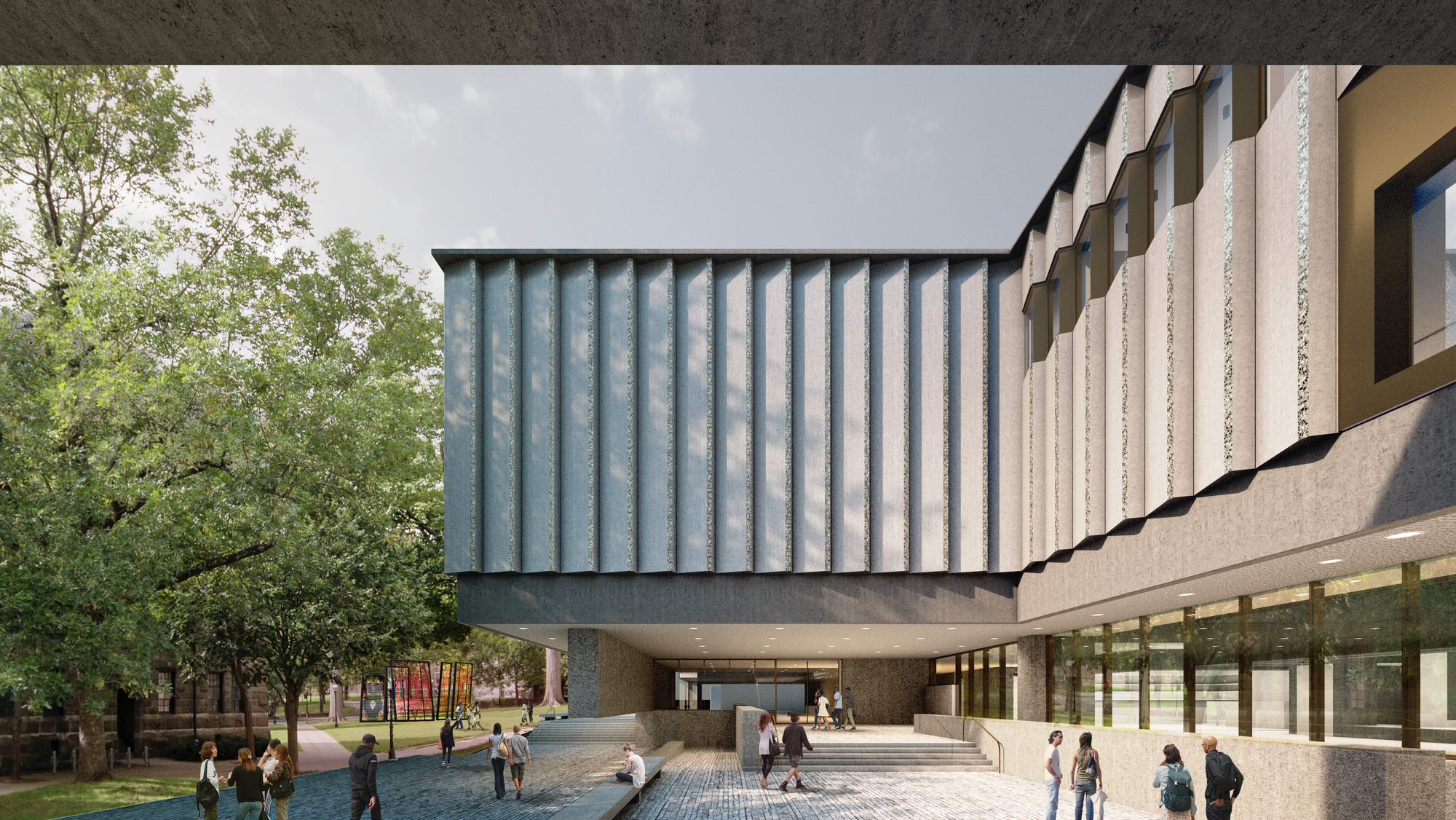Project Fact Sheet

At-a-glance information including timeline, materials, dimensions, and more
- Project description: A new and expanded Princeton University Art Museum. The building is shared with the Department of Art & Archaeology and Marquand Library.
- Location: Located on Princeton’s historic campus, positioned between Elm Drive and Chapel Drive along McCosh Walk, at the site of the previous Museum.
- Timeline:
- Construction began in summer 2021
- Project completion: fall 2025
- Architects: Adjaye Associates (Accra, London, and New York) served as design architects, in collaboration with Cooper Robertson (New York), who served as executive architects
- Architecture style: modern
Project configuration: The building consists of nine interconnected pavilions that are woven into the campus landscape. Two major “artwalks” bring visitors through the facility at ground level and connect the building with major campus walkways.
Public and educational program spaces are primarily located on the ground floor while collections and exhibition display galleries and conservation studios are located on the second floor; a public restaurant and staff offices are located on the third floor.
Compared to the previous building, the new design increases Museum educational spaces by 76%; exhibition areas by 38%; and visitor amenities by 80%.
- Dimensions: 146,000 gross square feet across three floors.
- Building materials:
- The exterior facade is composed primarily of highly sculptural stone aggregate panels, alternating between rough and polished finishes, with bronze panels and aluminum-framed triple-pane glazing.
- Interior flooring is primarily terrazzo and hardwood.
- Glulam beams support the roofs within the Entrance Hall, Grand Stair Hall, Grand Hall, and pavilion galleries; they constitute one of the building’s defining design elements.
- The monumental Entrance Hall and Grand Stair features terrazzo walls with embedded art displays.
Building program: The building complex contains the expanded Museum as well as the Department of Art & Archaeology and Marquand Library. From the outset, the project was conceived as a hub that would bring the University community together and serve as a cultural gateway to the Princeton campus for the wider public.
The building was designed in “zones” that allow for portions of the facility to operate for different purposes and at different hours. During gallery hours, visitors will be able to visit 80,000 square feet of the exhibition area, largely located on the second floor. During expanded building hours, visitors will have access to the Education Center, Grand Hall, and Museum Store via two “artwalks” that form the core circulation on the ground floor. This zone operates with extended hours, during which glimpses can be had into the galleries, inviting a return visit during gallery hours.
The ground-floor Education Center serves a variety of constituents and includes five object-study classrooms for investigating original works of art; two Creativity Labs; a small lecture hall seating sixty people; and two seminar rooms. The Grand Hall can host 236 people in retractable auditorium-style seating, and up to 250 guests for performances in the round. A sixth object-study classroom is located within the full-service second-floor Conservation Studios, which house highly specialized and technical equipment for the treatment of paintings, objects, and works on paper.
The building contains offices and adjoining meeting spaces for Museum staff, Department of Art & Archaeology faculty and administrators, and the staff of Marquand Library.
- Landscaping highlights: Adjaye Associates guided and informed the landscape design, which was overseen by Field Operations. The landscape scheme preserves and minimizes impact to nearby Prospect Gardens, to the east of the Museum site, and to the mature canopy of elms and beeches along McCosh Walk on the north edge of the site. A number of historically important and specimen trees were protected and preserved as part of the landscape plan; select others were relocated. On the west side, the open space design reinforces and connects to existing campus circulation and accommodates campus gatherings, including Reunions. The terracing here will accommodate up to 2,000 users while a more intimate natural amphitheater on the east side accommodates 200. The planting of native species around the site helps support Princeton’s ecological network.
